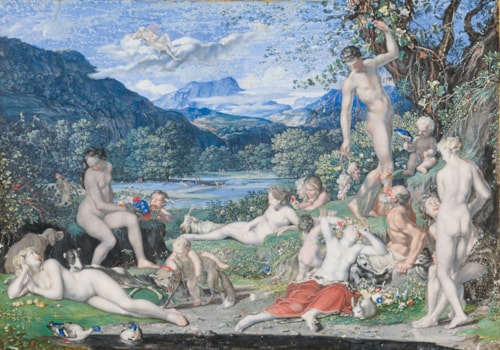
Joseph WERNER
Bern 1637 - Bern 1710
Biography
Born in the Swiss city of Bern, the Baroque painter and draughtsman Joseph Werner the Younger had a peripatetic career in Italy, France and Germany and Switzerland, producing work ranging from miniatures to large-scale ceiling paintings. The son of a painter of the same name, he completed his training in Basel and then in Frankfurt, where, from the age of thirteen, he worked in the studio of the Swiss painter and engraver Matthäus Merian the Younger. Between 1652 and 1654 Werner was in Rome, where he is thought to have been in contact with the painters Carlo Maratti and Andrea Sacchi, as well as the Frenchman Nicolas Poussin, whose influence is noticeable in much of his work. A small self-portrait in gouache on vellum, dated 1662 and today in the Victoria and Albert Museum in London, depicts the twenty-five-year-old artist standing before an easel on which rests a large allegorical drawing in pen and ink, and is the only work that can be securely attributed to Werner’s brief Italian period.
In 1662 Werner was summoned to France by King Louis XIV, whom he portrayed in the guise of Apollo in a portrait miniature of 1663-1664 now at Versailles. He lived and worked in Paris for much of the 1660s, when he produced some of his finest works. He painted mythological and allegorical scenes and portraits in miniature – often in the form of allegories - for the King, and also produced a number of exceptional miniatures of mythological subjects for the collector Eustache Quinault from Troyes, who owned at least eleven examples. Such was the artist’s renown in France that in 1671 the priest and poet Jean Bahier published a long poem praising the works by Werner in the Quinault collection, which begins: ‘Chefs-d’oeuvre sans pareils, merveilleuses figures, / Divins charmes des yeux, aimables mignatures, / Tableaux qui ravissez et la veue et l’esprit, / Fust-ce la main d’un homme ou d’un dieu qui vous fit? / Interprètes muets des plus nobles merveilles, / Qui parlez à nos coeurs sans parler aux oreilles, / Dites-nous quel pinceau si sçavant et si doux / Forma ces beaux objets que l’on admire en vous.’
Werner left Paris in 1667 and settled in Augsburg, coming into contact with artists such as Joachim von Sandrart and undertaking commissions in Zurich, Innsbruck and Munich, where between 1672 and 1673 he completed an allegorical ceiling painting for the Schloss Nymphenburg. He also produced religious miniatures, easel pictures and portrait miniatures, and among his patrons was the Electress Henrietta Adelaide of Bavaria, for whom he painted eight miniatures of scenes from the life of the Virgin between 1669 and 1670; these are today in the Residenz in Munich. After leaving Augsburg in 1680, Werner seems to have spent some time in Vienna, creating a number of portrait miniatures of the Imperial family, before returning to his native city of Bern in 1682 and founding a private art academy there, inspired by the precepts of his friend Sandrart. Unusually for the time, the school was open to women as well as men.
Much of Werner’s work of the 1680s and 1690s is in the form of portrait painting, since there seems to have been no real market in Bern for Baroque allegories and he appears to have received few official commissions. In 1695 he was appointed director of the newly-established Academy of Fine Arts in Berlin by the Elector of Brandenburg. Although he remained in the German city for over a decade, he was, by this time, much less productive as an artist, and only a few works, mostly oil paintings, are known from this late period. In 1707 Werner returned for good to Bern, where he died three years later. Both of his sons, Joseph Christopher Werner and Francis Paul Werner, became painters.


